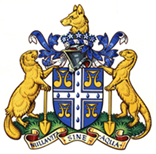
Join us for a visit to this marvellous piece of engineering completed in 1982 and still protecting London from flooding (just). The visit has been arranged to coincide with the planned testing of the operation of the barrier. The visit starts at 10.45hrs at the Thames Barrier visitor reception and during our time there the barrier is scheduled to open. We will hear about the history of the river and the risk of flooding in London, the environment and wildlife of the Thames. Our guide will be a technical expert on the operation of the barrier.
After our visit we will take the bus to Woolwich Arsenal (the original Arsenal!) for lunch at the Dial Arch (a stunning, restored 18th century armoury). After lunch we will board a boat to travel through the Barrier, past the O2 (the Millennium Dome), the Cutty Sark, Canary Wharf, through Tower Bridge and past the Tower of London, and into central London. You can decide where you would like to disembark for your journey home.
If you have not already done so please let me know at martin2.bigg@uwe.ac.uk by 30 March 2024 if you would like to come and I will send you details for payment for the visit to the Barrier.
How to get there?
The quickest way to get to the Barrier is to take the Elizabeth line to Woolwich. The Elizabeth Line links Reading, Paddington and Liverpool Street Stations as well as having connections to all London train stations. I will meet everyone at Woolwich Elizabeth Line station (warning, this is not the same as Woolwich Arsenal or Woolwich Dockyard stations) at 10.15 prompt. We will walk six minutes to catch a bus from Woolwich to the stop nearest the Barrier, which is fifteen minutes’ walk from the bus stop.
How much?
The cost of the visit to the Barrier is £18 each. The boat to the centre of London is less than £13 with reductions for travelcard and Oyster holders. The bus to and from the barrier is free for bus pass and travelcard holders, reduced for Oyster card holders and £1.75 for everyone else. You are encouraged to get a through ticket to Woolwich station/Zone 4 or a travelcard, whichever is cheaper.
As much of London was built on a floodplain, large parts suffered significantly during the 20th century. In 1928, 14 people drowned when the Thames overflowed and flooded central London. During the North Sea flood of 1953, hundreds of people lost their lives in the UK, and thousands were forced to evacuate their flood-damaged homes, including in East London.
The Thames Barrier spans 520 metres across the River Thames near Woolwich and protects 125km2 of central London from flooding caused by tidal surges. It has ten steel gates that can be raised into position across the river. When raised, the main gates are as high as a five-storey building and as wide as the opening of Tower Bridge. Each main gate weighs 3,300 tonnes.
The Barrier is closed under storm surge conditions to protect London from flooding from the sea. It may also be closed during periods of high flow over Teddington Weir. This is to reduce the risk of river flooding in some areas of west London, including Richmond and Twickenham.
As at 1 February 2024, the Barrier has been closed 211 times since it became operational in 1982. Of these closures:
- 119 were to protect against tidal flooding
- 92 were to protect against combined tidal/fluvial flooding







